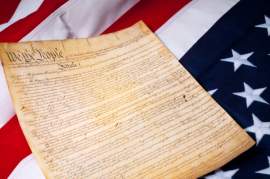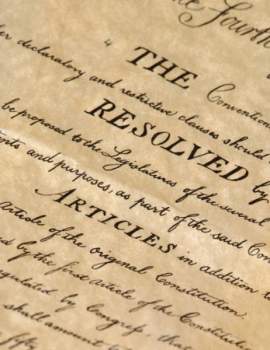
What Are The Labor Issues

Popular In Constitution
Purpose Of Lifetime Appointment And Pros And Cons Enumerated Powers Bicameral Legislature Background Article 3 Of The Constitution We The People 1st Amendment Who Wrote The Constitution Judicial Review Equal Protection Clause Three Fifths Compromise 10th Amendment 5th Amendment
Labor issues have been around for quite a long time within the United States. It represents an aspect of life that people must come to grips with in order to make a living in most cases. United States labor law is comprised of both Federal and State laws that attempt to provide a clear and standard basis by which individuals may be afforded rights for employment. Inclusions are composed of workers' rights to organize as well as their rights to protection as employees under the mercy of many powerful employers.
In general, you may expect to find that labor laws
differ from the Federal to the State levels of government. The Federal Government
specifies increased limitations in relation to employee rights, for instance,
in comparison to that of local and State levels of legislature. In addition,
distinctions may be made in terms of earnings, as well as working environment
conditions. While the Federal Government places limits on earnings as well as
overtime specifications, State and local governments may expand these rights
even further.
One area of interest for all levels of Government includes that of the issue of discrimination within the workplace. One example of a Federal/State Government understanding is through which the Federal Legislature gives State levels the power to go forward with their own statutes dealing with discrimination as long as they maintain equal protections to that of the Federal Government.
An example
of a Supreme Court case that dealt with such practices concerned with
"unemployment benefits" was Employment Division v. Smith. In this case, the Supreme Court ruled that it was
unconstitutional for the State to prevent the practices of religion connected to the use of peyote
for such reasons.
One of the first laws to forbid racial
discrimination was the Fair Employment Act. Subsequent legislation has been
attached to the Equal Employment Opportunity Commission. This Commission is
responsible for the institution and practice of "anti-discrimination laws".
Two important Acts went so far as to work with one nullifying the other.
While the Sherman Antitrust Act of 1890 was passed with the purpose of putting down unions, describing them as illegal aggregations, yet another Act overrode it. This was the statute entitled the Clayton Antitrust Act of 1914. This Act made sure to specify that unions not be labeled as illegal any longer under antitrust laws.
Another addition to the advent of combatting labor issues was that of Child Labor Amendments. These Amendments set forth to add text to the Constitution that specified specific stipulations. Congress was now given the authority to impose regulations on the labor in which individuals under the age of 18 are allowed to engage. Following such ratification, children had garnered the appropriate protection that they deserved in connection to labor laws within the United States.
NEXT: What Article 7 Says





















